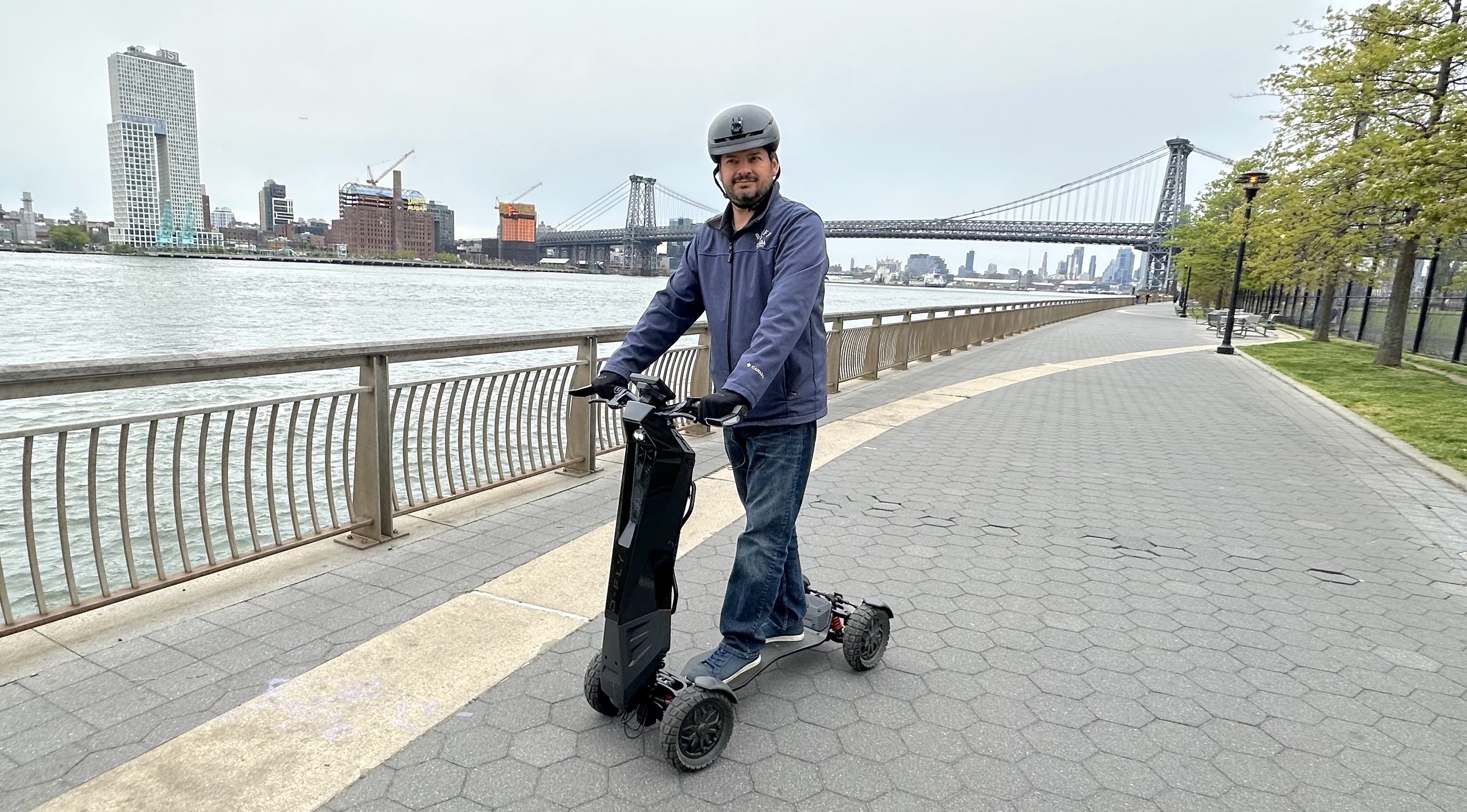
As the editor in charge of the best electric scooters page, I've ridden a lot of two-wheeled scooters, but the Dragonfly is the first four-wheeled scooter I've come across — and man, can this thing fly.
But more than that, the Dragonfly's four wheels, suspension, and unique tilt-steering make it unlike any other electric scooter around. Its starting price of around $4,000 also puts it in rarified air, as most scooters cost about a third of the price — or less.
I was able to test ride the Dragonfly for an hour or so one blustery afternoon in New York, and came away impressed with all it could do, and where it could go.
Dragonfly scooter: Price and availability
The Dragonfly is being offered in two versions: the Dragonfly DF and the Dragonfly DFX. The latter model is the beefier (and pricier) of the two, with wider handlebars and mudguards over all of the tires. It also has a larger front downtube section, offroad tires, and a few other extras. The Dragonfly DF costs $3,995; the price for the DFX model, nor the accessories to turn a DF into a DFX, have yet to be announced.
You can currently reserve the scooter at Dragonfly's site; it should ship this summer.
Dragonfly scooter: Design and specs
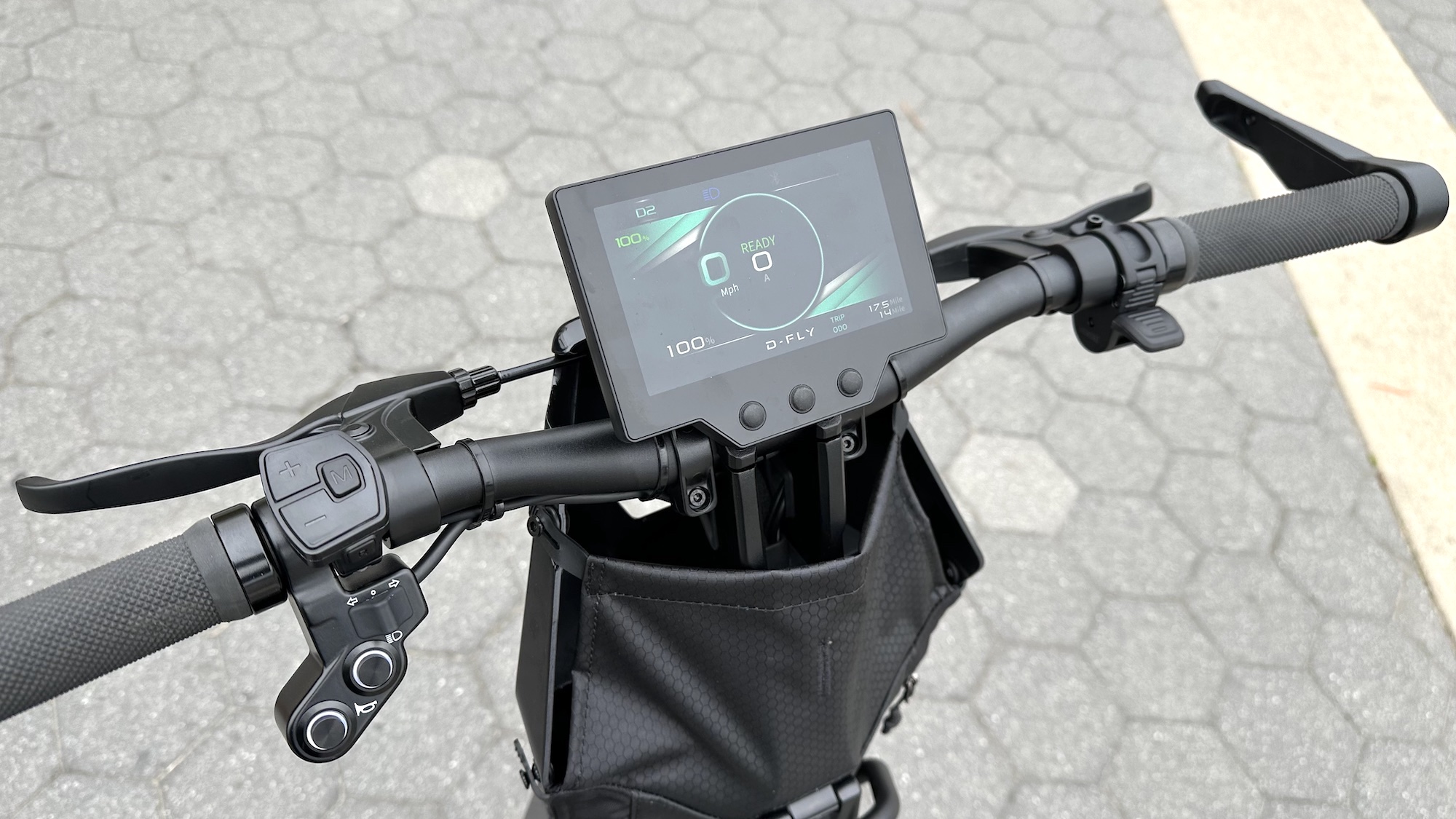
As you might expect, the Dragonfly has some pretty impressive bona fides, starting with its dual 500W motors which have a peak output of 1,650 Watts. The Dragonfly's deck is made of carbon fiber, as are a number of other pieces, such as the mudguards. It helps keep the weight somewhat down, though the whole thing checks in at a beefy 80 pounds.
Like most scooters, the Dragonfly's downtube folds onto the deck, making the whole contraption a bit easier to store; just don't try carrying it up too many stairs. Both of the scooter's batteries are housed in the downtube section, which you might think would make things top-heavy, but I never felt as if the scooter would tip over while I was riding it.
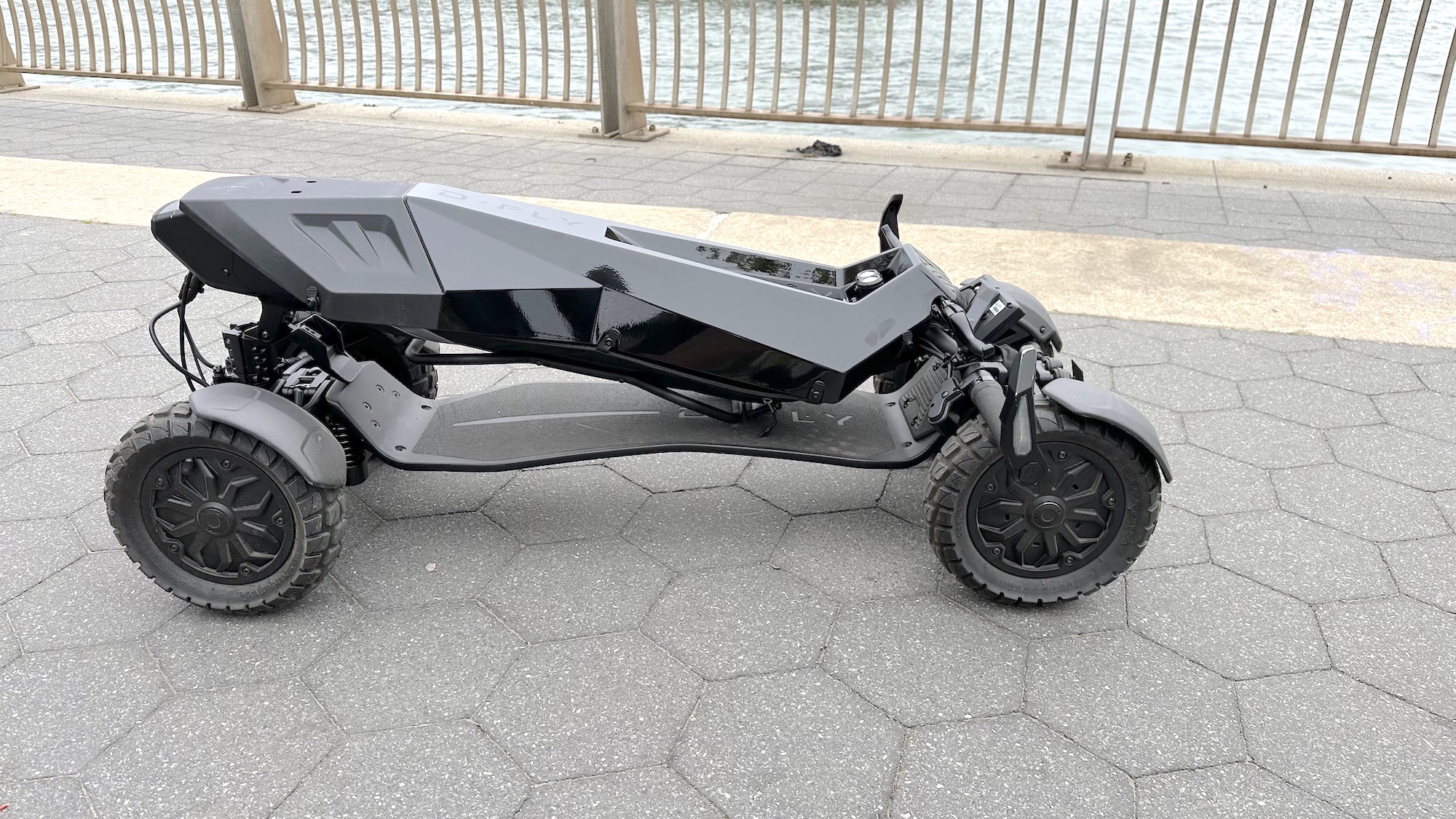
Dragonfly hands-on: The ride
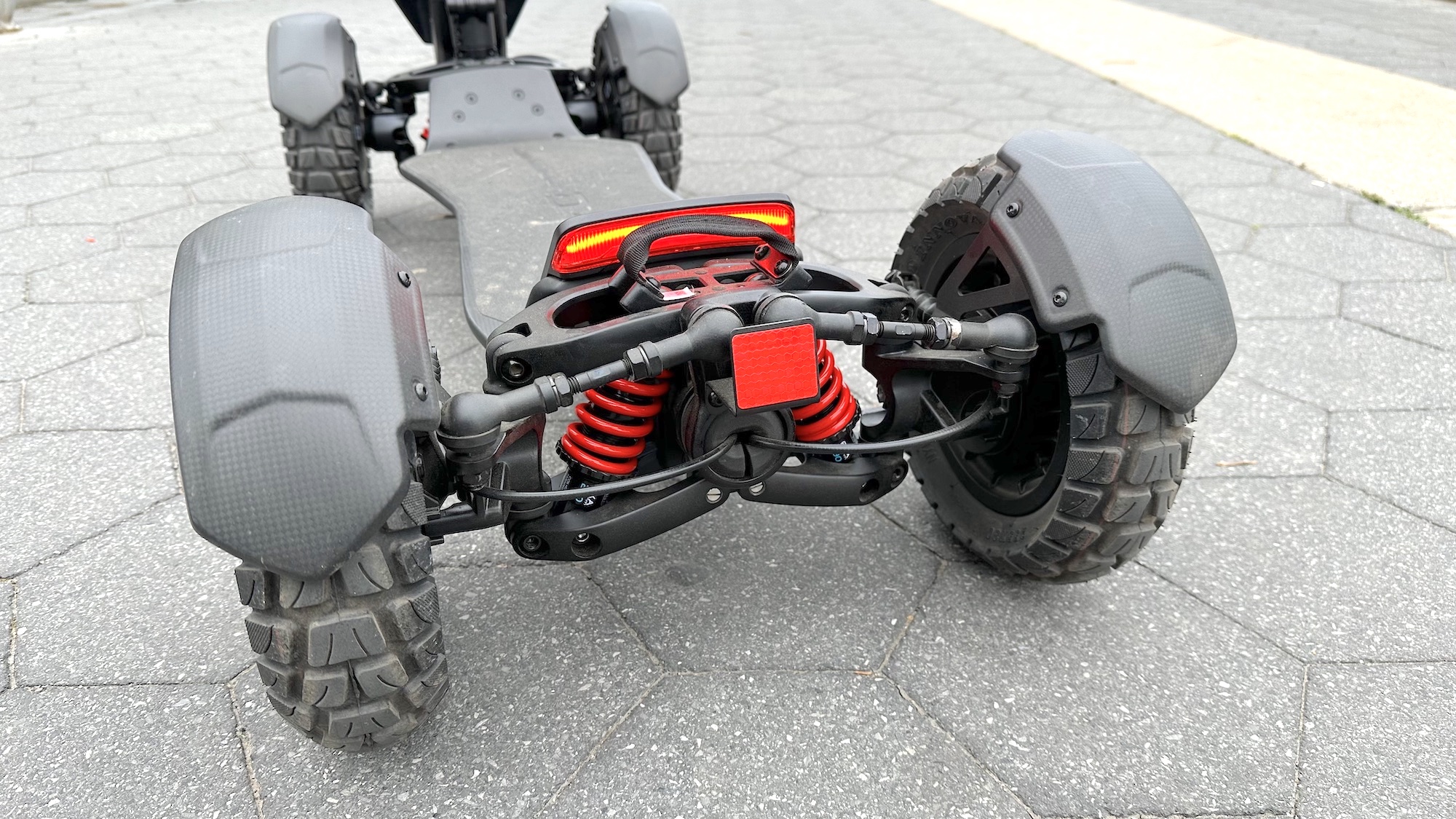
The Dragonfly's suspension and steering really set it apart. While you can turn the handlebars left and right just like any other scooter, you can also tilt them left and right to change the scooter's direction. It's akin to skiing or snowboarding; you simply shift your weight in the direction you want to go. It took me a few runs to get used to both tilting and turning the handlebars. But once I did, I was able to start carving through turns, just as I would schussing down the slopes.
The full, tunable suspension and large, 10 x 2.5-inch pneumatic tires also let me take the Dragonfly "offroad"; I drove it right up a curb and onto a grassy section of a park. I definitely had to concentrate more on where I was going, but the scooter handled the bumps, dirt, and tree roots with ease.
Between the handlebars of the Dragonfly is a large 5-inch color touchscreen that's your digital dashboard; it shows your speed, battery life, and lets you adjust things like your acceleration curve and braking. It was large and bright, and what I'd expect from a $4,000 scooter. (A requisite smartphone app will also let you control the scooter.)
Three presets let you control the max speed of the Dragonfly, from 5 to 25 miles per hour. While it wasn't the fastest scooter I've ridden — that would be the Apollo Ghost, which could hit 35 MPH — the preproduction Dragonfly I rode had some pretty strong torque tuning, so at its max level, I rocketed off when I hit the accelerator, causing the tires to skip a little at first. A company rep said that the full production model will let you adjust the acceleration, so it's not as abrupt.
Dragonfly hands-on: Outlook
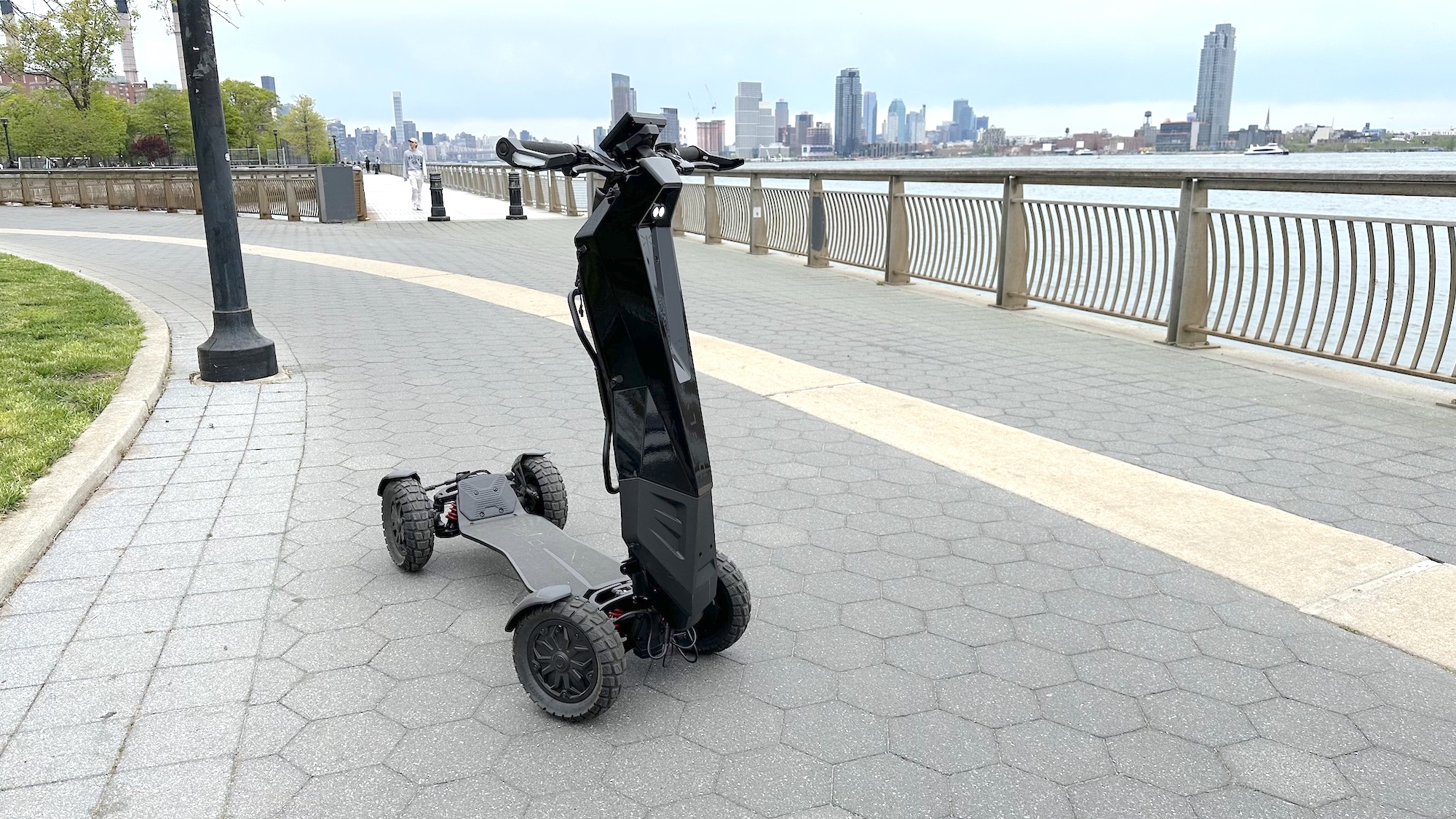
The $4,000 Dragonfly scooter is definitely in rare company; few other scooters — even those designed for offroad use — are this expensive. The Dragonfly's top speed of 25 MPH is definitely slower than other premium scooters; while that's plenty fast for me, it may not be enough for some speed demons. The $3,300 Kaabo Wolf King GT Pro, for instance, has an advertised top speed of 63 MPH, which is dangerously fast, even for its 11 x 3.5-inch tires.
But the Dragonfly is more than just speed; its unique 4-wheel design is more about stability when traveling over uneven surfaces, and is an inventive approach for those who want to travel much further afield.







